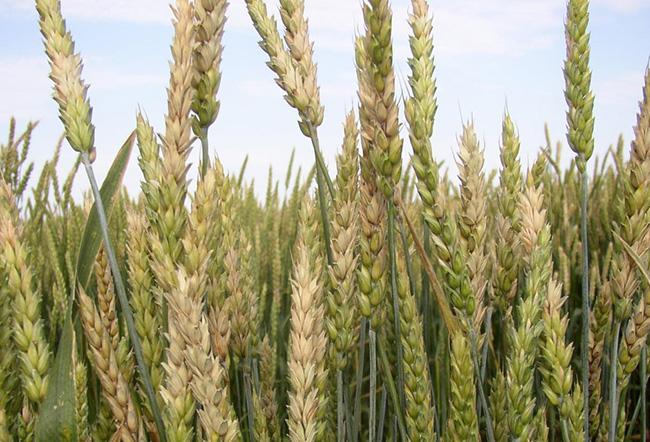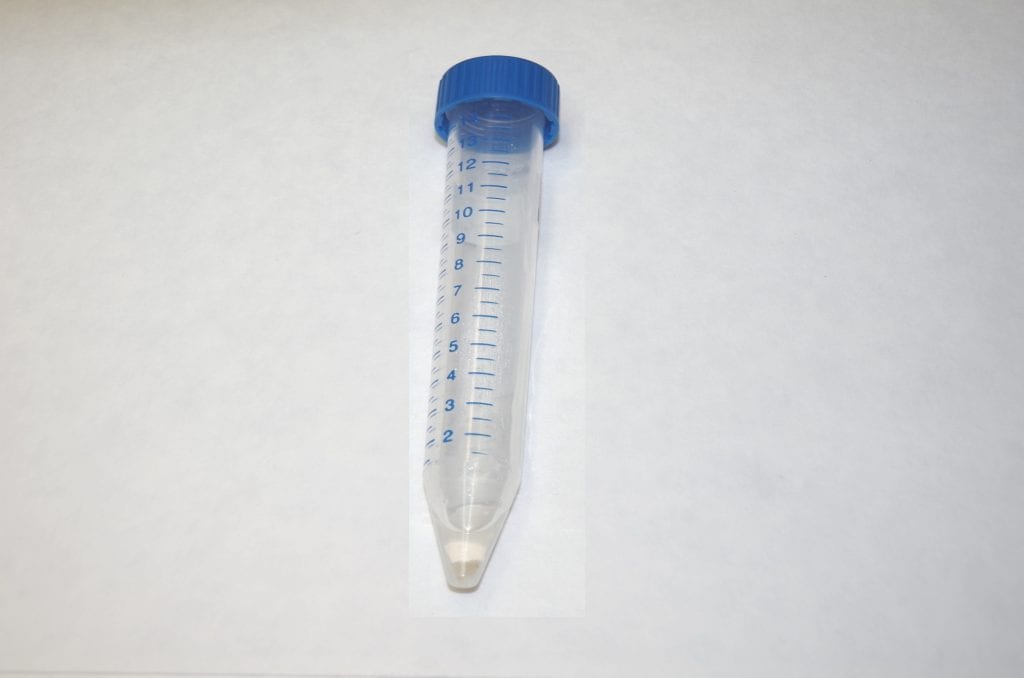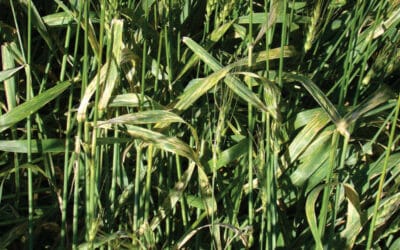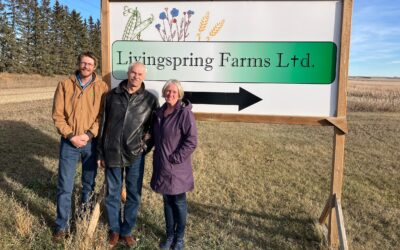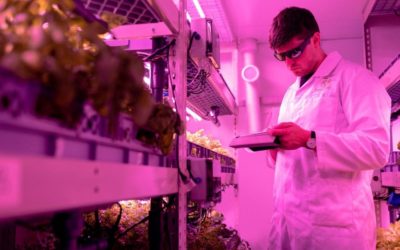With fusarium removed from Alberta’s Pest and Nuisance Control Regulations, farmers in the province now are focusing on controlling the disease.
This summer marked a new chapter in Alberta’s agriculture history. For the last few decades Fusarium graminearum has been under Alberta’s Pest and Nuisance Control Regulations — this summer though it was removed, opening up a new door for the agriculture industry.
“Some of the regulations were outdated. And from across the province, different areas had different issues with fusarium. They were trying to manage it according to their local areas, but it was more of a regional problem,” Tom Coppock, president of the Alberta Seed Processors, says.
Attention has quickly shifted from changing the regulation to focusing on management strategies for fusarium in the province, along with planning future opportunities for research and crop varieties.
“For me, there’s no one size fits all for managing Fusarium graminearum or any other disease,” Trent Whiting, SeCan’s Alberta and British Columbia marketing rep says. “You’ve got to take the time to look at your rotations and then hopefully with good management, variety selection, spraying when you need to and cooperation from Mother Nature, you come up with a plan to move forward for managing this disease.”
Legalization
Fusarium graminearum was placed under the Pest and Nuisance Control Regulation by the provincial government after it was brought into southern Alberta in the late 1990s on plant material from outside the province. It was meant as a way to fight back and try to curtail the spread throughout Alberta.
“As time went on, we were finding that fusarium was no longer confined to southern Alberta. It had moved in on its own accord from Saskatchewan,” Ward Oatway, past president of the Alberta Seed Growers, says. “It’s been slowly creeping westward from there.”
In the seed industry, growers were finding themselves with fusarium infected seed which they weren’t allowed to sell, unlike their counterparts in Manitoba and Saskatchewan, who were allowed small percentages on seed. If even a trace of fusarium was found, growers were forced to either export the seed to Saskatchewan or Manitoba, sell the seed lot as commercial grain and losing the seed premium, or even destroy it. Even when seed could be heat treated to remove the risk of spreading the fusarium, it was still not legal to sell in Alberta.
The industry joined together to form an industry working group and started advocating for the government to change the regulation. At times they would get close to having the restrictions modified but then an election would be called, and the new government would either not want to touch a regulatory amendment or the process would have to all over again. Finally, on June 3, Alberta Minister of Agriculture and Forestry Devin Dreeshen signed a ministerial order removing Fusarium graminearum from the Pest and Nuisance Control Regulations.
Advancements Hindered
Prior to the changes, research work had been limited in Alberta which was making it hard to find ways to manage fusarium infections under Alberta specific conditions. Researchers could only conduct tests on fusarium if it was naturally in the soil, and they couldn’t run controlled trials as they weren’t allowed to plant fusarium infected seed.
“We haven’t been able to come up with an Alberta approach on how to really manage it because we can’t do any of the testing of variety, screening, or even testing of products here, because we’re never able to even introduce the inoculum into a trial,” Whiting says, adding Alberta is a large province with widely varying conditions compared to its Prairie counterparts.
Whiting is also the parent seed coordinator for SeCan in Western Canada and is in charge of planning seed trials. Due to the Alberta fusarium restrictions, he would find himself picking growers in Saskatchewan and Manitoba over Alberta to try out new varieties. By reducing the amount of seed trials done in Alberta, it limited the release of new varieties.
“We were finding that even if a variety had better resistance to fusarium and everything, the breeding program in the seed distribution or the seed multiplication sites were in areas that had fusarium,” Oatway says. “It was extremely difficult for seed growers in Alberta to get seed the first year of a new variety.”
New seed varieties would launch in Alberta a few years after they had launched in Manitoba and Saskatchewan. AAC Brandon wheat launched in Alberta a year after the rest of the Prairie provinces because the stock seed had some fusarium in it, Whiting says. AAC Brandon is now the most widely grown variety in Alberta.
Managing Fusarium on the Farm
Now that the regulation has changed, farmers and agronomists in Alberta can focus on how to manage the disease to limit the spread of it.
According to Whiting, it all starts with planning what crops you are going to plant. It is critical a crop rotation has at least two years between fusarium host crops — meaning a “crop rotation” of wheat, canola, wheat, canola, etc. doesn’t work.
“Select a variety that meets all of your needs — be it maturity, standability, disease, etc. Always use the best quality seed available,” he explains. “Ask for a seed test, get it seed tested… Use a proper seed treatment and make sure it’s applied properly.”
And even if you pick a variety which is fusarium resistant, this doesn’t mean it’s 100 per cent tolerant and the crop will still need to be sprayed if the weather conditions are right for the fusarium development, Whiting adds. The Alberta Wheat Commission has a website, at managefhb.ca, which looks at humidity and environmental factors to predict fusarium risk across the province in real time for your specific area.
Seeding into slightly cooler soils may also help limit for early season development of fusarium, Kelly Turkington, research scientist with Agriculture and Agri-Food Canada at the Lacombe Research and Development Centre, says. Fungicides can also help to manage Fusarium graminearum. It’s important to use the right rate at the right time and target the right plant tissue, Turkington explains.
“The thing to keep in mind with fungicides is that it’s suppression at best, and it’s not equivalent to the level of control that you may have experienced when using a fungicide for other plant diseases such as cereal leaf spots and rusts,” he says.
Harvest management is another way to handle Fusarium graminearum. To reduce the number of fusarium damaged kernels (FDK) in grain, farmers can blow out lighter weight FDKs through the combine, Turkington says. He adds this can be counterproductive though as it returns the infected material to the field. New technology is being researched where the chaff is ground up, which may help for more rapid decomposition. It also important to clean up infected crop residues in the field, this can be done through effective straw chopping and distribution during harvest. Post-harvest grain cleaning may also help to reduce FDK levels.

A Spornado system in a field. The Spornado catches spores in the air which can then be tested for traces of fusarium. Photo: 20/20 Seed Labs
Fusarium Testing
Fusarium management isn’t just about what you do yourself on the farm, it also includes testing to see if there is fusarium present and at what levels. At 20/20 Seed Labs in Nisku, Alta. they offer two tests for fusarium testing — a plate test and DNA test.
In a plate test the seed sample is surface sterilized with bleach to remove any surface contaminants, it is then plated on growth media, Samiya Fatima, plant disease diagnostician at 20/20 Seed Labs, explains. After five to seven days of incubation, the results are then given as a percentage.
A DNA test is where DNA is extracted from the sample using PCR, Fatima says. The results will tell you if the pathogen is present or not within three days.
“It’ll give you information on the surface contamination because the seed is not surface sterilized,” she explains. “We recommend getting the DNA testing done for the pathogen in areas which have not seen fusarium before.”
In order to gather fusarium spores in the field for testing, farmers can use the Spornado, Fatima says. The Spornado is a funnel with a fan which moves with the wind, there is a small filter attached at the base of the funnel to trap any airborne spores. The filters are then sent to 20/20 Seed Labs where a DNA test is done with results back within 24 hours.
“It’s very handy and this past year, we’ve have seen a lot of uptake in the use of Spornado. Farmers use that information to decide whether to spray,” Fatima says. She expects interest in the Spornado to continue to increase as farmers in Alberta focus more on fusarium management.
With files from Marc Zienkiewicz


